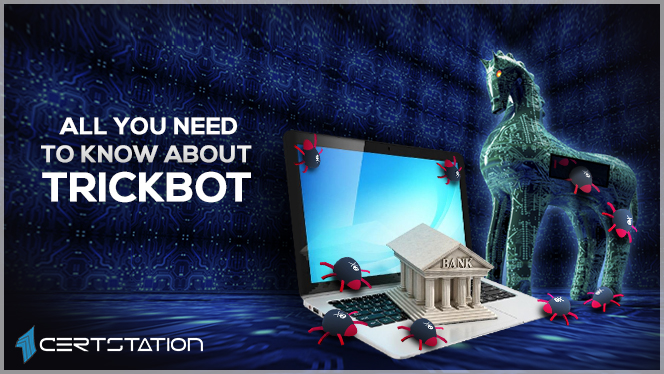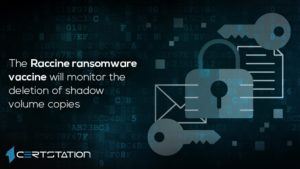
Trickbot is an important type of malware developed for a banking Trojan. Developed in 2016, the malware is one of the latest banking Trojans, and several of its original characteristics have been inspired by Dyreza. As well as targeting a wide range of international banks via its web injects, Trickbot can also steal from Bitcoin wallets.
Some of its other capabilities include garnering emails and credentials using the Mimikatz tool, with its authors also displaying a capacity for continuous new features and developments. TrickBot comes in units along with a configuration file. Each module has a particular job like obtaining persistence, proliferation, stealing credentials, encryption, and so on. The endpoint user does not experience any symptoms of a Trickbot contagion. Nevertheless, a network admin is expected to see amendments in traffic or efforts to get to banned IPs and domains.
How do you get infected by Trickbot?
TrickBot is endorsed using junk emails and false Adobe Flash Player updaters. Junk emails comprise many malicious attachments such as PDF files, MS Office documents, etc., by opening these attachments. Users perform scripts that furtively download and install viruses such as TrickBot, while Fake updaters pollute the system by abusing obsolete software bugs/faults or simply downloading and installing malwares instead of updates. Basically, the key reasons for computer infections are meagre knowledge and careless behavior.
Related article: Emotet Malware: A Threat Distributor
How do you know if you have been infected by Trickbot?
No symptoms of a Trickbot infection will be noticed by the endpoint. Nevertheless, a network admin will probably see transformations in traffic or efforts to reach out to banned IPs and domains, as the malware will link with its command and control setup to exfiltrate data and obtain assignments.
What can be done to prevent TrickBot infections?
To help prevent Trickbot infections, you should do the following.
- Train workers about social engineering and phishing.
- If there is no policy regarding doubtful emails, consider making one and mention that all doubtful emails should be sent to the security and/or IT departments.
- Spot external emails with a banner signifying it is from an external source. This will help users detect hoaxed emails.
- Apply appropriate fixes and updates shortly after suitable testing.
- Perform filters at the email gateway for emails with known malspam pointers, such as identified malicious subject lines, and block suspicious IP addresses at the firewall.
- To reduce the possibility of hoaxed or revised emails, execute Domain Message Authentication Reporting and Conformance (DMARC) policy and verification, beginning by applying the Sender Policy Framework (SPF) and the DomainKeys Identified Mail (DKIM) standards.
- Stick to the principal of least privilege, ensuring that users have the least level of access vital to achieve their duties. Limit administrative IDs to designated administrators.
What if a Trickbot infection is identified?
If a TrickBot infection is recognized, deactivate Internet access at the impacted site to help abate the degree of exfiltration of IDs linked with outside, third-party resources. Also, assess affected subnets to identify multi-homed systems which may unfavorably impact control efforts. In addition, think about briefly taking the network offline to perform identification, avoid reinfections, and stop the proliferation of the malware.
- Recognize, shut down, and take the infected machines off the network.
- Intensify monitoring of SMB communication or complete block it between workplaces, and configure firewall rules to only allow access from recognized administrative servers.
- Evaluate the need to have ports 445 (SMB) open on systems and, if needed, consider restricting connections to only precise, trusted hosts.
- As TrickBot is recognized for scraping both domain and local IDs, it is advised that a network-wide password rearrange occur. This is best done after the systems have been cleaned and moved to the new VLAN. This is recommended so new passwords are not scraped by the malware.
How to remove Trickbot infection
To eliminate Trickbot infection, and to clean your system from Trojan horse, you ought to engage a reliable security software. This malicious program is capable of imitating genuine computer processes or files. Therefore, trying to find and remove all malware-related files from the computer is a problematic and complex task that might lead to permanent damage to the system. It’s highly recommended that Reimage , SpyHunter 5 or Malwarebytes be installed and properly scan the system aided by one of those security programs. Last but not least, it must be kept in mind that the malware should be instantly removed because this data-stealing trojan might result in loss of money and other serious privacy-related problems.
Conclusion
In the last few years, Trickbot has gone on to evolve and progress on the cyber-threat scene. The latest campaigns have been some of the more inexhaustible and detrimental across the history of this threat family. Having said that, it can be halted. Comprehension of the full expanse of the malware has taken a lot of time both for the team and in the broader community. The use of PowerShell to avoid exposure is a method used by APTs and is known to be tough to screen without the right security controls. Nevertheless, while furtively released as polymorphic packed executables, the artefacts, behavior and network callouts themselves do give a signal of the infection. Due to the way the trojan hires a susceptibility to proliferate through a company’s network, any affected machine on the network will re-infect machines that have been earlier cleaned when they rejoin the system. Therefore, IT teams need to detach, fix, and remediate each infected system one-by-one. This can be a long and meticulous process.




